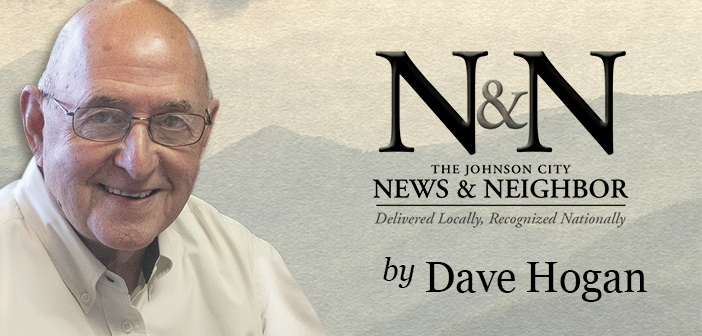
The first four-syllable word I spoke could well have been “Junaluska.” Growing up in the Valleytown community of Cherokee County, NC, I was surrounded by the word: Junaluska Road, Junaluska Gap, Junaluska Springs, Junaluska Baptist Church, Junaluska Creek (where I was baptized), and Junaluska Hotel. It’s appropriate that Junaluska be memorialized in this manner since he was a former resident of the Valleytown community.
The Junaluska name is common throughout the southern Appalachians. Many commercial enterprises boast the name, especially in Western North Carolina and East Tennessee. There is even the Junaluska salamander.
There are at least two statues to Chief Junaluska. One near my home here at Lake Junaluska Conference Center and a 30-foot-tall chestnut oak image, crafted by sculptor Peter Wolf Toth, resides at Metro Kiwanis Park in Johnson City.
It’s ironic and fitting that I’ve retired to Lake Junaluska, which was formerly watched over by Mount Junaluska, renamed North Eaglenest Mountain. (Many folks have mentioned to me they would like to see the Junaluska name restored.)
In planning COVID-compliant activities for this year’s annual Father-Daughter week, I suggested to Gina a visit to the Chief Junaluska gravesite in Robbinsville, N.C. Joined by my brother Jim, we traveled to Robbinsville via Tatham Gap Road, also known as the Trail of Tears Road.
This road was built in the 1930s to facilitate the removal of the Cherokee Indians from what is now Graham County, across the Snowbird Mountains, to begin their forced march to Oklahoma. Chief Junaluska was one of those Cherokees.
Reading several large stone tablets encircling his gravesite, Gina, Jim, and I took in some details of Junaluska’s life. After only a short time in Oklahoma, he returned to North Carolina, making the almost 900-mile trip on foot! In 1846, the North Carolina Legislature rewarded him for his remarkable service by making him a citizen and giving him land near present-day Robbinsville. He died there in 1868, and in 1910 the Daughters of the American Revolution erected the monument at his gravesite.
Then I noticed words that had escaped me on a previous visit: “Although never a chief, Junaluska was a respected leader…” Never a chief! All my life I’ve seen and heard Junaluska referred to as a chief. This required an explanation.

For clarification, I reached out to Robin Swayney, Genealogist/Archivist at the Cherokee Museum, and T.J. Holland, Cultural Resources Supervisor at the Junaluska Museum. Indeed, Junaluska was never an elected chief of the Cherokee Nation.
Junaluska was a natural leader and warrior and served as spokesman for the Cherokee on many occasions. It was common for even non-Cherokees to refer to these leaders (also known as Headmen) as chief. Kind of like a nickname.
It was not until 1817 when the Cherokee Nation formed a constitution and created voting districts for a legislative branch that a Principal Chief was first elected. Prior to 1817, each village or town had its own ruling body consisting of Headmen, Councilors, Clan Mothers, Advisors, and Beloved Men and Women. It was under this system that Junaluska became known as chief, first at Sugartown in present-day Macon County and later in Valleytown.
Though never formally elected a chief, given Junaluska’s many accomplishments, including saving the life of future President Andrew Jackson during the War of 1812 (which he later regretted because of Jackson’s sponsorship of the Indian Removal Act), Junaluska certainly earned the right to be honored with the title of chief.
Author’s note: Shortly after my consultation with T.J. Holland, he died in a tragic accident. A member of the Eastern Band of Cherokee Indians, he was the Tribe’s cultural resources manager. He served on the board of the Cherokee Indian Museum and, to honor his legacy, the museum is naming a room after him, the T.J. Holland Education Room. T.J. was an alumnus of Western Carolina University, which has re-named an endowment scholarship the T.J Holland Memorial Cherokee Studies Scholarship.
After 57 years in the radio industry, Dave Hogan is enjoying his retirement in North Carolina. He’d love for you to say ‘howdy’ to him via email: davealtonhogan@gmail.com.




